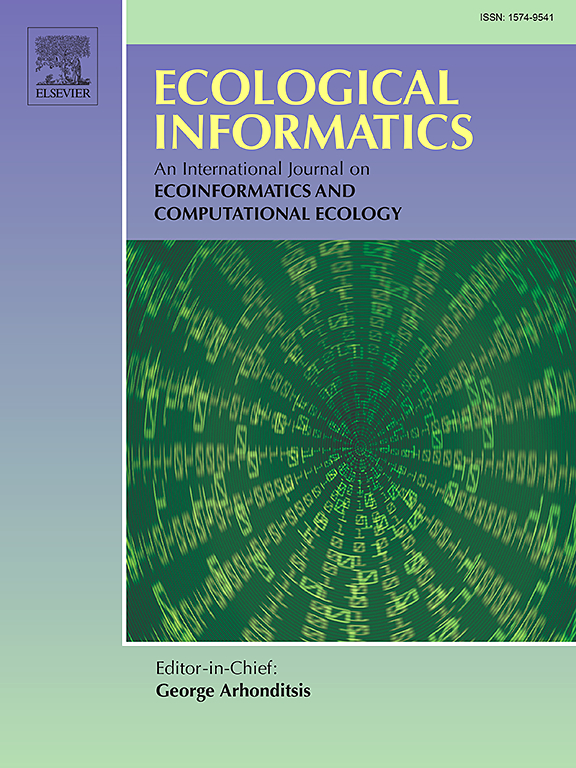Continuous Real-Time Acoustic Monitoring of endangered bird species in Hawai‘i
IF 5.8
2区 环境科学与生态学
Q1 ECOLOGY
引用次数: 0
Abstract
The decline of endemic bird species in Hawai‘i requires innovative conservation measures enabled by passive acoustic monitoring (PAM). This paper describes a novel real-time PAM system used in the Pōhakuloa Training Area (PTA) to reduce wildlife collisions and minimize disruptions to military operations while ensuring the protection of endangered bird species such as the Nēnē and ‘Akē‘akē. The system is based on the BirdNET algorithm and was evaluated with over 16,000 soundscape recordings from Hawai‘i. The results show that the model version HI V2.0, based on BirdNET and specifically adapted to Hawaiian bird species, showed the clearest separation between true and false positive detections (average precision 49% to 52%), although this difference was not statistically significant. However, accuracy varied considerably between species and locations, emphasizing the need to adapt the models to the specific conditions of use. A novel web application allows immediate visualization of the predicted bird species, facilitating the implementation of conservation measures. The three acoustic monitoring units installed at the PTA in January 2023 demonstrate the system’s potential for continuous monitoring and protection of Hawaiian endangered bird species.
夏威夷濒危鸟类的连续实时声学监测
夏威夷特有鸟类物种的减少需要创新的保护措施,使被动声学监测(PAM)成为可能。本文介绍了一种用于Pōhakuloa训练区(PTA)的新型实时PAM系统,该系统可以减少野生动物碰撞,最大限度地减少对军事行动的干扰,同时确保对Nēnē和“aku”aku等濒危鸟类的保护。该系统基于BirdNET算法,并对来自夏威夷的16,000多个音景录音进行了评估。结果表明,基于BirdNET并专门适应夏威夷鸟类的模型版本HI V2.0在真阳性和假阳性检测之间表现出最明显的分离(平均精度为49%对52%),尽管这种差异没有统计学意义。然而,不同物种和地点的准确性差别很大,强调需要使模型适应具体的使用条件。一个新颖的网络应用程序可以立即可视化预测的鸟类物种,促进保护措施的实施。2023年1月在PTA安装的三个声学监测单元表明,该系统具有持续监测和保护夏威夷濒危鸟类物种的潜力。
本文章由计算机程序翻译,如有差异,请以英文原文为准。
求助全文
约1分钟内获得全文
求助全文
来源期刊

Ecological Informatics
环境科学-生态学
CiteScore
8.30
自引率
11.80%
发文量
346
审稿时长
46 days
期刊介绍:
The journal Ecological Informatics is devoted to the publication of high quality, peer-reviewed articles on all aspects of computational ecology, data science and biogeography. The scope of the journal takes into account the data-intensive nature of ecology, the growing capacity of information technology to access, harness and leverage complex data as well as the critical need for informing sustainable management in view of global environmental and climate change.
The nature of the journal is interdisciplinary at the crossover between ecology and informatics. It focuses on novel concepts and techniques for image- and genome-based monitoring and interpretation, sensor- and multimedia-based data acquisition, internet-based data archiving and sharing, data assimilation, modelling and prediction of ecological data.
 求助内容:
求助内容: 应助结果提醒方式:
应助结果提醒方式:


